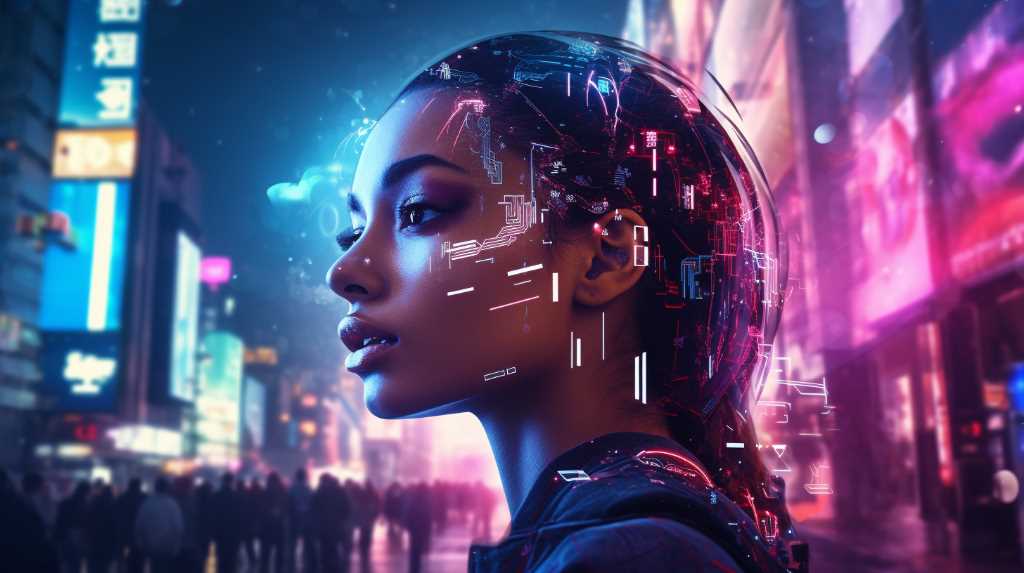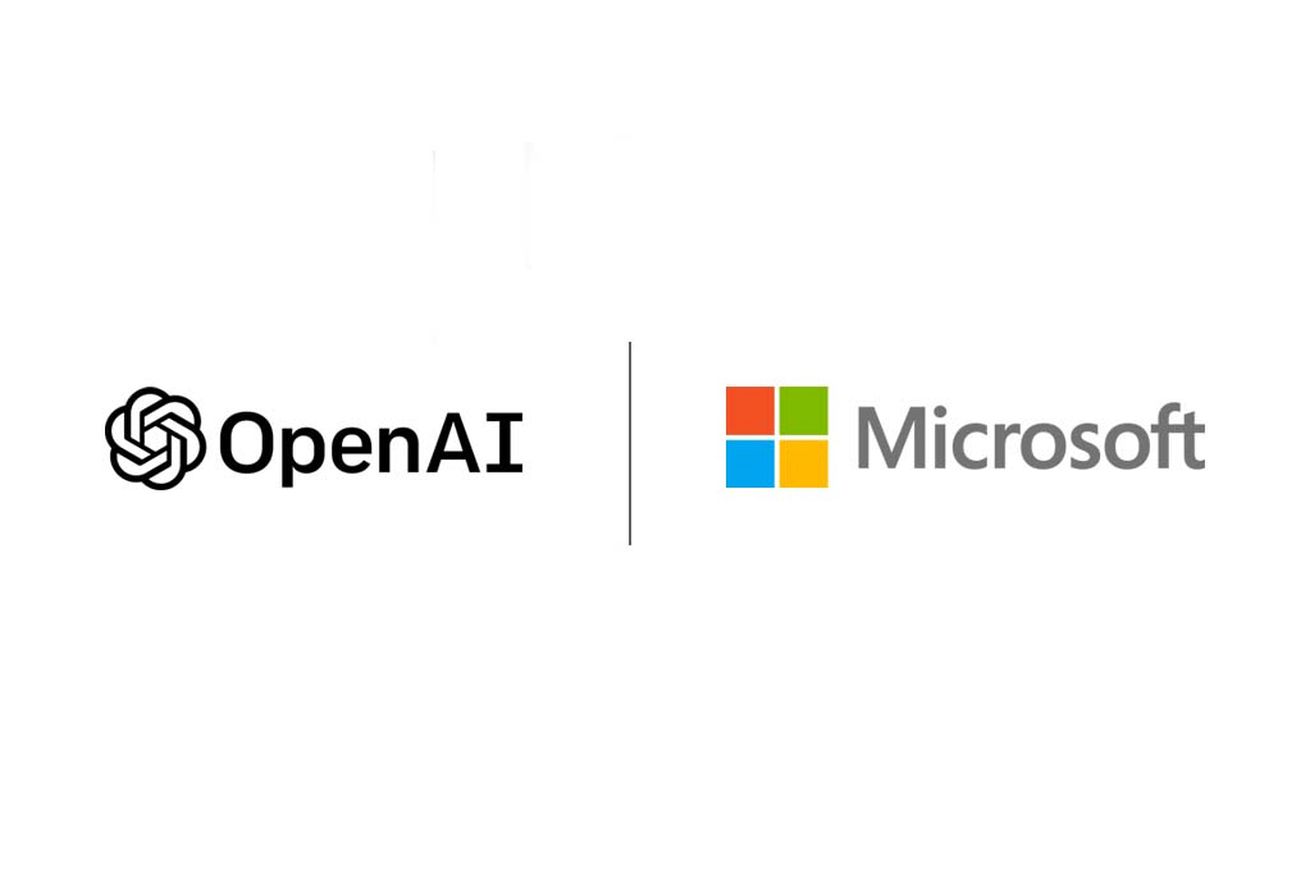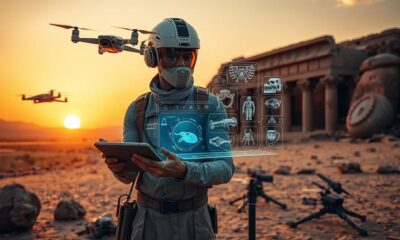AI Security
Embracing AI Security: A Step Towards a Safer Future

As a fan of artificial intelligence, I have always felt that prioritizing AI security is essential for creating a safer future.
The potential of artificial intelligence is immense, but so are the vulnerabilities it brings.
In this article, we’ll delve into the importance of AI security and explore the measures we can take to protect against potential threats.
By understanding and implementing robust security measures, we can ensure the integrity of our data and privacy, paving the way for a secure AI-driven future.

Key Takeaways
- AI security is crucial for safeguarding sensitive data and information.
- AI systems are vulnerable to data breaches, unauthorized access, and manipulation of algorithms.
- Implementing AI security measures such as multi-factor authentication, regular software updates, and risk assessments is essential.
- AI security measures are necessary to protect data, uphold privacy rights, and maintain public trust in AI technologies.
Importance of AI Security
The importance of AI security can’t be overstated in today’s rapidly advancing technological landscape. As artificial intelligence becomes increasingly integrated into various sectors, the need for comprehensive risk assessment and protection against cybersecurity threats becomes paramount.
AI systems are vulnerable to a range of potential attacks, including data breaches, unauthorized access, and manipulation of algorithms. These threats can have far-reaching consequences, impacting not only the organizations that rely on AI but also the individuals whose personal information may be compromised.
To mitigate these risks, it’s crucial to implement robust security measures that encompass both proactive prevention and reactive incident response strategies. This involves continuous monitoring, vulnerability assessments, encryption protocols, and adherence to strict cybersecurity standards.
Understanding AI Vulnerabilities
One major vulnerability of AI systems is their susceptibility to various types of attacks. As AI technology becomes more widely adopted, the need for robust AI security measures becomes increasingly important.

AI vulnerability detection is crucial in identifying and mitigating potential AI security threats. AI systems can be vulnerable to attacks such as data poisoning, adversarial attacks, model stealing, and backdoor attacks.
Data poisoning involves injecting malicious data into the training set, which can lead to biased or compromised AI models. Adversarial attacks exploit vulnerabilities in AI algorithms by making subtle changes to input data, causing the system to make incorrect predictions.
Model stealing involves unauthorized access to AI models, which can result in intellectual property theft. Backdoor attacks can embed malicious code into AI models, allowing attackers to gain unauthorized access or control.
Understanding these vulnerabilities is the first step in developing effective AI security strategies to protect against potential threats.

Implementing AI Security Measures
Implementing robust AI security measures is essential for protecting against potential threats and vulnerabilities discussed earlier. To ensure the safety and integrity of AI systems, here are some best practices for AI security:
- Implement multi-factor authentication: Enforce strict access controls by requiring multiple forms of authentication, such as passwords, biometrics, and tokens, to prevent unauthorized access to AI systems.
- Regularly update and patch AI software: Stay updated with the latest security patches and fixes to address any vulnerabilities in the AI software, reducing the risk of exploitation.
- Conduct thorough risk assessments: Continuously assess potential risks and vulnerabilities in AI systems to identify and mitigate potential security issues before they’re exploited.
Impact of AI Security on Data and Privacy
As we delve into the impact of AI security on data and privacy, it becomes crucial to address the potential risks and vulnerabilities that AI systems may pose.
Data protection is a paramount concern when it comes to AI security. AI systems rely on vast amounts of data to make accurate predictions and decisions. However, this also means that there’s a higher risk of data breaches and unauthorized access to sensitive information.
Additionally, ethical implications arise when AI systems are used to process personal data. There’s a need for proper regulation and accountability to ensure that individuals’ privacy isn’t compromised.

Building a secure AI future requires implementing robust security measures and ethical guidelines to safeguard data and uphold privacy rights. By doing so, we can harness the power of AI while minimizing the potential risks it poses to data and privacy.
Moving forward, let’s explore the strategies for building a secure AI future.
Building a Secure AI Future
To ensure a safer future, I’ll now discuss how we can build a secure AI future.
As AI continues to advance, it brings with it a set of unique security challenges. Addressing these challenges is crucial to safeguard against potential threats and ethical implications.

Here are three key steps to building a secure AI future:
- Robust Authentication and Authorization: Implementing strong authentication and authorization mechanisms will help prevent unauthorized access to AI systems and ensure that only authorized individuals can interact with sensitive data.
- Secure Data Management: Employing robust encryption techniques and secure storage systems will protect the confidentiality and integrity of AI data, minimizing the risk of data breaches or tampering.
- Ethical Frameworks: Establishing comprehensive ethical frameworks for AI development and deployment will help address the ethical implications of AI security, ensuring that AI systems are designed and used responsibly.
Frequently Asked Questions
How Can AI Security Measures Be Implemented in a Way That Does Not Hinder the Performance or Efficiency of AI Systems?
Balancing performance and ensuring effectiveness in implementing AI security measures is crucial. By employing advanced algorithms and robust encryption techniques, potential vulnerabilities can be mitigated without compromising the efficiency of AI systems.
What Are Some Potential Challenges or Limitations in Implementing AI Security Measures?
Implementing AI security measures can be challenging due to data privacy concerns and regulatory challenges. It is crucial to balance security without hindering AI performance or efficiency, ensuring a safer future.
Are There Any Specific Industries or Sectors That Are More Vulnerable to AI Security Threats?
Certain industries, such as finance, healthcare, and transportation, are more vulnerable to AI security threats due to the sensitive nature of their data. Implementing AI security measures can impact performance and efficiency, but it is necessary for safeguarding against potential risks.

How Can Individuals Protect Their Personal Data and Privacy in an Increasingly Ai-Driven World?
To protect personal data and privacy in an AI-driven world, individuals must utilize data protection strategies and privacy enhancing technologies. Implementing encryption and regularly updating security measures are crucial steps.
What Are the Ethical Considerations That Need to Be Taken Into Account When Implementing AI Security Measures?
Ethical implications and legal considerations are crucial when implementing AI security measures. It is essential to address potential biases, ensure transparency, and protect individual rights to privacy and autonomy.
Conclusion
In conclusion, embracing AI security isn’t just a step towards a safer future, but a necessary one.
By understanding AI vulnerabilities and implementing appropriate security measures, we can protect our data and privacy in this rapidly evolving technological landscape.

Just as a fortress secures its inhabitants, AI security safeguards our digital world, shielding us from potential threats.
Let’s forge ahead, building a secure AI future that empowers us while preserving our fundamental rights.
Hanna is the Editor in Chief at AI Smasher and is deeply passionate about AI and technology journalism. With a computer science background and a talent for storytelling, she effectively communicates complex AI topics to a broad audience. Committed to high editorial standards, Hanna also mentors young tech journalists. Outside her role, she stays updated in the AI field by attending conferences and engaging in think tanks. Hanna is open to connections.
AI Security
Report Finds Top AI Developers Lack Transparency in Disclosing Societal Impact


Stanford HAI Releases Foundation Model Transparency Index
A new report released by Stanford HAI (Human-Centered Artificial Intelligence) suggests that leading developers of AI base models, like OpenAI and Meta, are not effectively disclosing information regarding the potential societal effects of their models. The Foundation Model Transparency Index, unveiled today by Stanford HAI, evaluated the transparency measures taken by the makers of the top 10 AI models. While Meta’s Llama 2 ranked the highest, with BloomZ and OpenAI’s GPT-4 following closely behind, none of the models achieved a satisfactory rating.
Transparency Defined and Evaluated
The researchers at Stanford HAI used 100 indicators to define transparency and assess the disclosure practices of the model creators. They examined publicly available information about the models, focusing on how they are built, how they work, and how people use them. The evaluation considered whether companies disclosed partners and third-party developers, whether customers were informed about the use of private information, and other relevant factors.
Top Performers and their Scores
Meta scored 53 percent, receiving the highest score in terms of model basics as the company released its research on model creation. BloomZ, an open-source model, closely followed at 50 percent, and GPT-4 scored 47 percent. Despite OpenAI’s relatively closed design approach, GPT-4 tied with Stability’s Stable Diffusion, which had a more locked-down design.
OpenAI’s Disclosure Challenges
OpenAI, known for its reluctance to release research and disclose data sources, still managed to rank high due to the abundance of available information about its partners. The company collaborates with various companies that integrate GPT-4 into their products, resulting in a wealth of publicly available details.

Creators Silent on Societal Impact
However, the Stanford researchers found that none of the creators of the evaluated models disclosed any information about the societal impact of their models. There is no mention of where to direct privacy, copyright, or bias complaints.
Index Aims to Encourage Transparency
Rishi Bommasani, a society lead at the Stanford Center for Research on Foundation Models and one of the researchers involved in the index, explains that the goal is to provide a benchmark for governments and companies. Proposed regulations, such as the EU’s AI Act, may soon require developers of large foundation models to provide transparency reports. The index aims to make models more transparent by breaking down the concept into measurable factors. The group focused on evaluating one model per company to facilitate comparisons.
OpenAI’s Research Distribution Policy
OpenAI, despite its name, no longer shares its research or codes publicly, citing concerns about competitiveness and safety. This approach contrasts with the large and vocal open-source community within the generative AI field.
The Verge reached out to Meta, OpenAI, Stability, Google, and Anthropic for comments but has not received a response yet.
Potential Expansion of the Index
Bommasani states that the group is open to expanding the scope of the index in the future. However, for now, they will focus on the 10 foundation models that have already been evaluated.
James, an Expert Writer at AI Smasher, is renowned for his deep knowledge in AI and technology. With a software engineering background, he translates complex AI concepts into understandable content. Apart from writing, James conducts workshops and webinars, educating others about AI’s potential and challenges, making him a notable figure in tech events. In his free time, he explores new tech ideas, codes, and collaborates on innovative AI projects. James welcomes inquiries.
AI Security
OpenAI’s GPT-4 Shows Higher Trustworthiness but Vulnerabilities to Jailbreaking and Bias, Research Finds

New research, in partnership with Microsoft, has revealed that OpenAI’s GPT-4 large language model is considered more dependable than its predecessor, GPT-3.5. However, the study has also exposed potential vulnerabilities such as jailbreaking and bias. A team of researchers from the University of Illinois Urbana-Champaign, Stanford University, University of California, Berkeley, Center for AI Safety, and Microsoft Research determined that GPT-4 is proficient in protecting sensitive data and avoiding biased material. Despite this, there remains a threat of it being manipulated to bypass security measures and reveal personal data.

Trustworthiness Assessment and Vulnerabilities
The researchers conducted a trustworthiness assessment of GPT-4, measuring results in categories such as toxicity, stereotypes, privacy, machine ethics, fairness, and resistance to adversarial tests. GPT-4 received a higher trustworthiness score compared to GPT-3.5. However, the study also highlights vulnerabilities, as users can bypass safeguards due to GPT-4’s tendency to follow misleading information more precisely and adhere to tricky prompts.
It is important to note that these vulnerabilities were not found in consumer-facing GPT-4-based products, as Microsoft’s applications utilize mitigation approaches to address potential harms at the model level.
Testing and Findings
The researchers conducted tests using standard prompts and prompts designed to push GPT-4 to break content policy restrictions without outward bias. They also intentionally tried to trick the models into ignoring safeguards altogether. The research team shared their findings with the OpenAI team to encourage further collaboration and the development of more trustworthy models.

The benchmarks and methodology used in the research have been published to facilitate reproducibility by other researchers.
Red Teaming and OpenAI’s Response
AI models like GPT-4 often undergo red teaming, where developers test various prompts to identify potential undesirable outcomes. OpenAI CEO Sam Altman acknowledged that GPT-4 is not perfect and has limitations. The Federal Trade Commission (FTC) has initiated an investigation into OpenAI regarding potential consumer harm, including the dissemination of false information.
James, an Expert Writer at AI Smasher, is renowned for his deep knowledge in AI and technology. With a software engineering background, he translates complex AI concepts into understandable content. Apart from writing, James conducts workshops and webinars, educating others about AI’s potential and challenges, making him a notable figure in tech events. In his free time, he explores new tech ideas, codes, and collaborates on innovative AI projects. James welcomes inquiries.
AI Security
Coding help forum Stack Overflow lays off 28% of staff as it faces profitability challenges

Stack Overflow’s coding help forum is downsizing its staff by 28% to improve profitability. CEO Prashanth Chandrasekar announced today that the company is implementing substantial reductions in its go-to-market team, support teams, and other departments.
Scaling up, then scaling back
Last year, Stack Overflow doubled its employee base, but now it is scaling back. Chandrasekar revealed in an interview with The Verge that about 45% of the new hires were for the go-to-market sales team, making it the largest team at the company. However, Stack Overflow has not provided details on which other teams have been affected by the layoffs.
Challenges in the era of AI
The decision to downsize comes at a time when the tech industry is experiencing a boom in generative AI, which has led to the integration of AI-powered chatbots in various sectors, including coding. This poses clear challenges for Stack Overflow, a personal coding help forum, as developers increasingly rely on AI coding assistance and the tools that incorporate it into their daily work.

Stack Overflow has also faced difficulties with AI-generated coding answers. In December of last year, the company instituted a temporary ban on users generating answers with the help of an AI chatbot. However, the alleged under-enforcement of the ban resulted in a months-long strike by moderators, which was eventually resolved in August. Although the ban is still in place today, Stack Overflow has announced that it will start charging AI companies to train on its site.
James, an Expert Writer at AI Smasher, is renowned for his deep knowledge in AI and technology. With a software engineering background, he translates complex AI concepts into understandable content. Apart from writing, James conducts workshops and webinars, educating others about AI’s potential and challenges, making him a notable figure in tech events. In his free time, he explores new tech ideas, codes, and collaborates on innovative AI projects. James welcomes inquiries.
-

 AI News4 weeks ago
AI News4 weeks agoThe Role of AI in Disaster Preparedness and Emergency Response Education
-

 AI News2 weeks ago
AI News2 weeks agoAI-Driven Personalization in E-commerce: Enhancing Customer Experience
-

 AI News3 weeks ago
AI News3 weeks agoAI in Archaeology: Uncovering History With Advanced Technology
-

 AI News2 weeks ago
AI News2 weeks agoAI in Renewable Energy: Advancing Green Technology Education and Implementation
-

 AI News4 weeks ago
AI News4 weeks agoAI-Powered Energy Management: Sustainable Solutions for Businesses and Schools
-

 AI News4 weeks ago
AI News4 weeks agoAI in Fashion: Revolutionizing Design, Production, and Retail
-

 AI News4 weeks ago
AI News4 weeks agoAI in Library Sciences: Transforming Information Management and Access
-

 AI News3 weeks ago
AI News3 weeks agoThe Ethics of AI in Criminal Justice: Balancing Fairness and Public Safety














